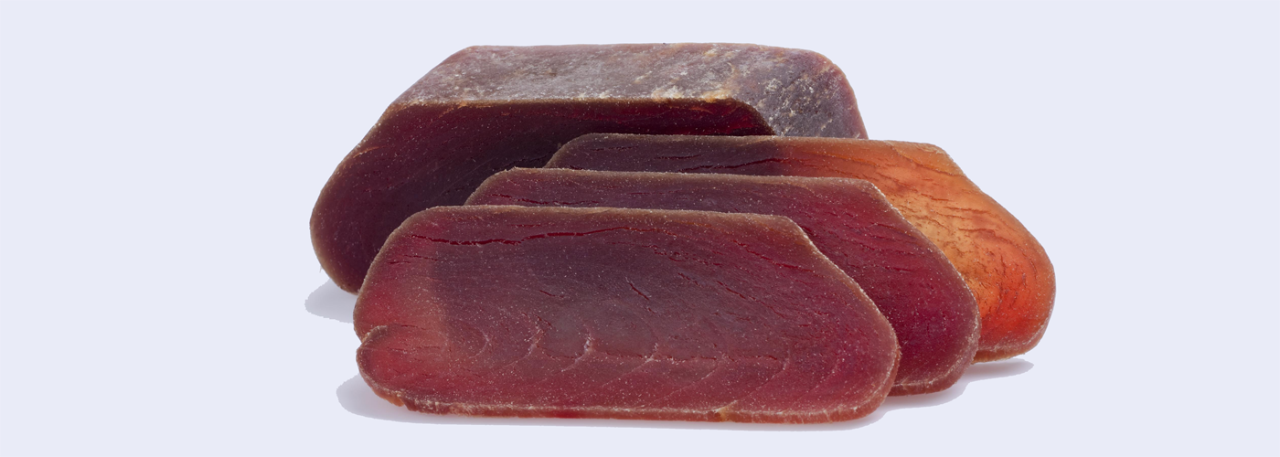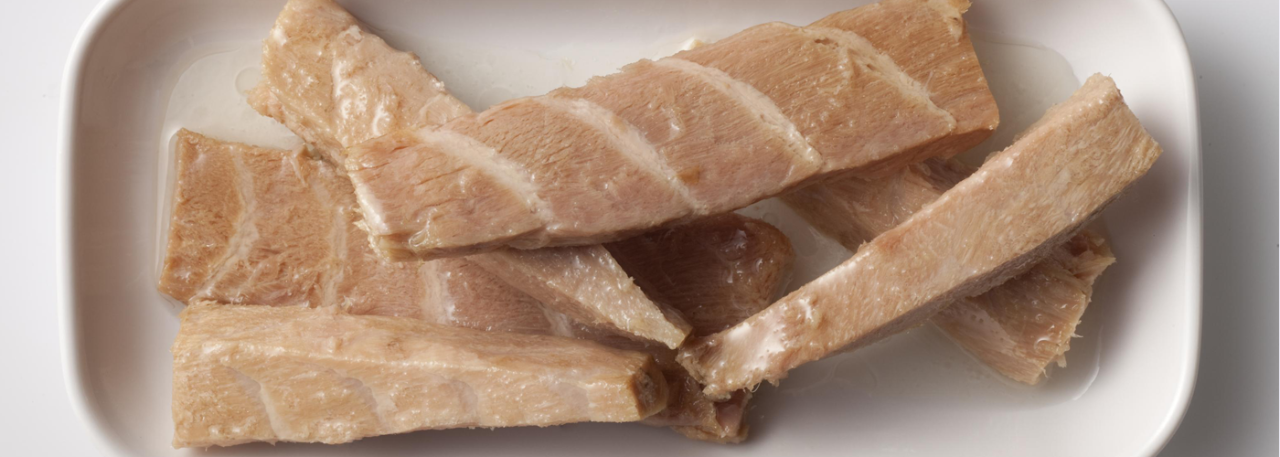.png.transform/rendition-xs/image_image%20(1).png)
Tuna with a Spanish Accent: An Explosion of Flavor on the Palate
Every little part of this sea delicacy is of use and here, we'll give you the keys to enjoying it
In salad, grilled, in pasties or even cooked in recipes as traditionally Spanish as marmitako, tuna is not only the fish that makes Spain the number two country in the world as far as tuna-based product exports, but it’s also the main ingredient in a complete national recipe book full of exquisite suggestions.
Given all this, you’re probably wondering: What’s so special about tuna that people love it so much? Well, to begin with, the immense number of properties. After all, it is a fish that’s rich in Omega-3 fatty acids which help bring down cholesterol and triglyceride levels. And it’s also full of vitamins A, D, B2, B3, B6, B9 and B12 as well as, of course, minerals with high levels of phosphorous and magnesium. So, who can resist?
In any case, this is only the first of many reasons why the tuna caught off the Spanish coast is so highly admired within and outside its borders: yes, it’s very healthy, but it’s also extremely, and we mean extremely, tasty.
And that’s why absolutely everything from tuna is used. In fact, even a whole language has been created around it. You may hear of tuna belly or loin, the upper back akami, the kama block, otoro and even chutoro... Dark and light tail muscle meat, the noten, the middle back senaka and cheeks... In short, there are more than 20 different names for the different cuts of tuna. The quartering action even has an interesting name: ronqueo, which refers to the noise of the knife.
The best part is that every cut of tuna has specific characteristics that influence the flavor and make it the ideal ingredient for a number of recipes. There are so many ways to play with it in the kitchen that it’s quite a challenge for even the most award-winning chefs: the combinations and pairings are endless.
Shall we talk about a few recipes again? No problem at all! There’s quite a variety. After all, tuna is full of flavor whether eaten raw, semi-raw or cooked. The prized tuna belly is the delicacy of all delicacies: veined with generous layers of fat and somewhat more gelatinous, it’s used to prepare the best sushi in the world. And then it’s also served as tartare or tataki for guaranteed success, but there’s more: stewed in different sauces, salt cured —known as mojama—, as tuna balls or grilled. It’s even delicious pickled!

What’s more, Spain is particularly fond of preserved tuna either in glass jars or cans and normally covered in olive oil. As already mentioned, we’re talking about the leading European country in tuna fishing as well as processing. The figures say it all: more than 240 thousand tons of preserved tuna were produced in Spain in 2019 with much of it exported throughout the world.
BLUEFIN TUNA, A PRECIOUS TREASURE
Setting all the characteristics and preparations apart, let’s now talk about the king of kings. You’ve probably at some point heard someone talk about what’s considered to be the most exquisite tuna on the planet and it’s no exaggeration. With meat that’s a bit darker than light tuna or yellowfin tuna, the flavor is also slightly more intense. There’s no debate about it: bluefin tuna is pretty big talk.
To get a better understanding, let’s go back in history some three thousand years to a time when people in the Mediterranean and Atlantic were already fishing this amazing animal. Its meat was so famous even back then that there are tunas drawn on caves and on currency immortalizing it.
The most interesting thing is the purely artisan trapping and catching technique used in the very beginning by the Phoenicians known as almadraba, which is still practiced today in four locations in the south of Spain: Zahara de los Atunes, Barbate, Tarifa and Conil de la Frontera are all responsible for this noble tradition staying around. It’s a real homage to the past.
So, what is it all about? Let’s explain: it’s a complex maze of underwater nets used to capture the tuna as it migrates through the Strait of Gibraltar on its way to the Mediterranean. In those warmer waters is where tuna reproduce. Although the mere description already sounds striking, the most spectacular thing about this thousand-year-old technique is precisely the moment known as levantá when, using only their own strength, fishermen lift up the nets full of tuna from their boats. It’s a moment of the utmost importance when considering that each one of them can weigh over 400 kilos and be up to 3 meters long.
But the end never justifies the means even in such a ferocious battle between man and nature: only the largest fish can be kept as the smallest ones must be returned to sea.
Would you like to hear one more little interesting fact? Here you go: the almadraba tuna fishing season runs each year from April to June which is when restaurant menus all across southern Spain are filled with dishes featuring this ingredient. Many of the cuts, however, actually travel to Japan which is the country that absolutely adores this delicacy.
This is hardly surprising as the almadraba bluefin tuna that delights palates half the world around is simply unique. And impossible to resist.






